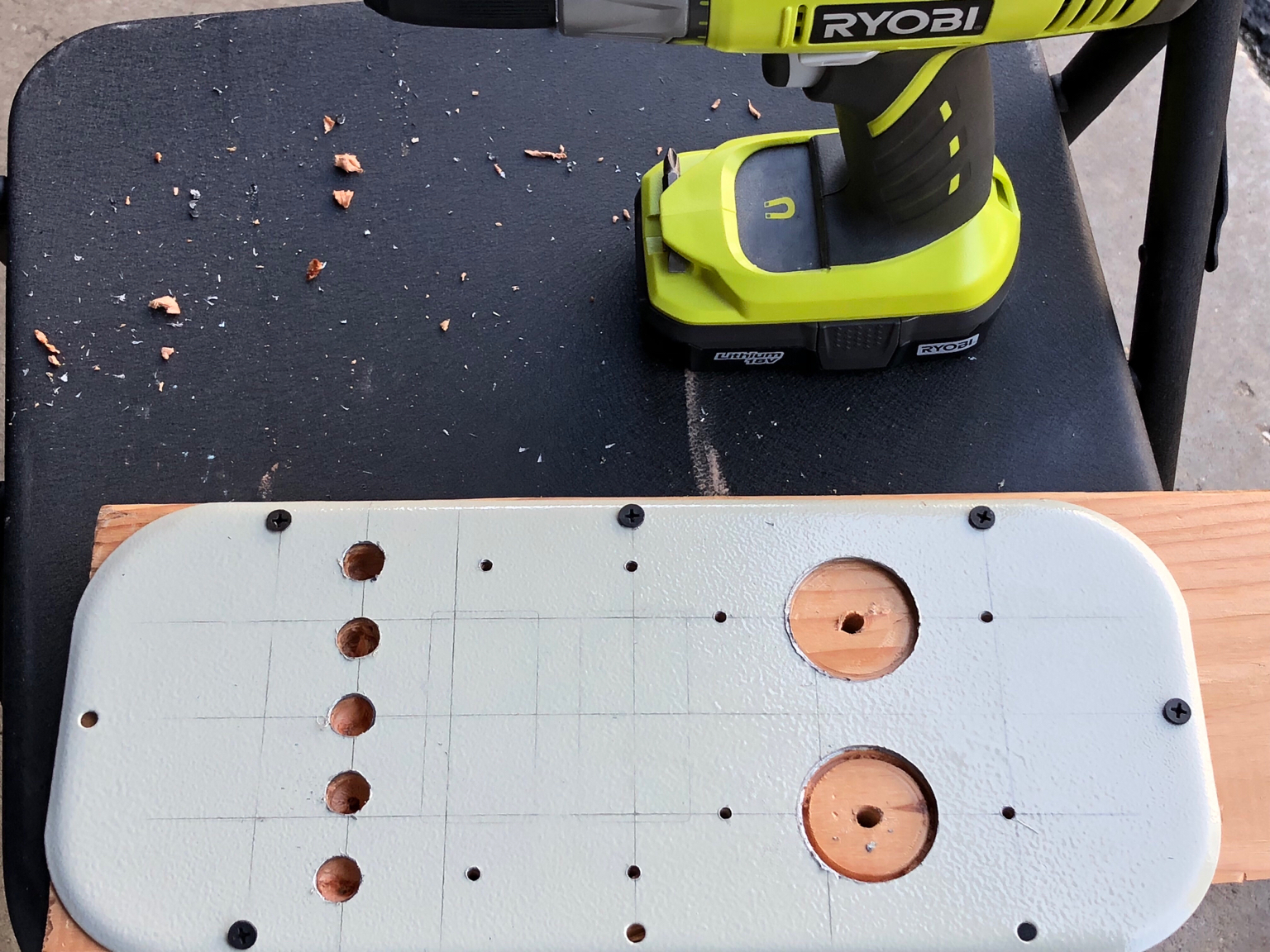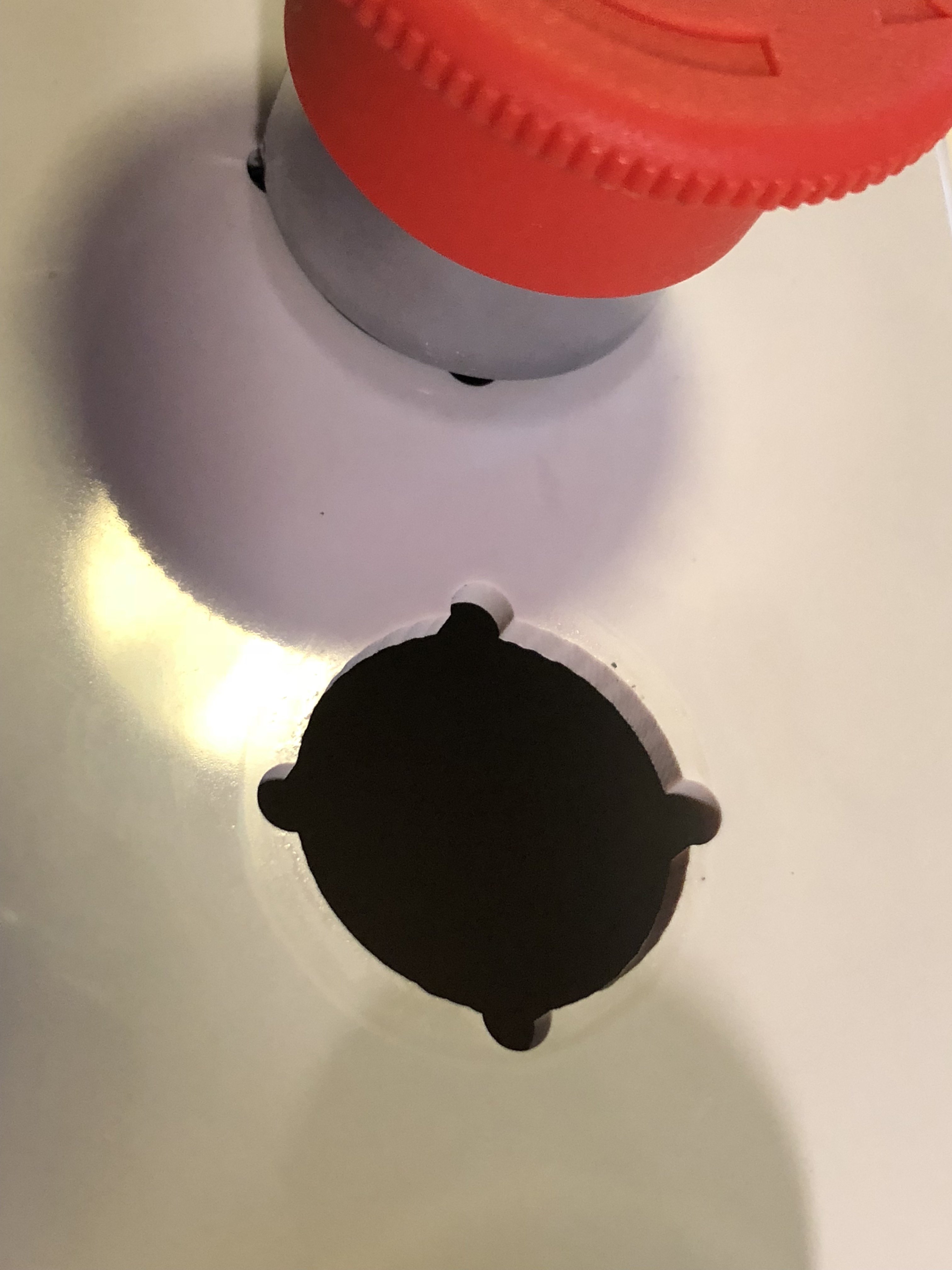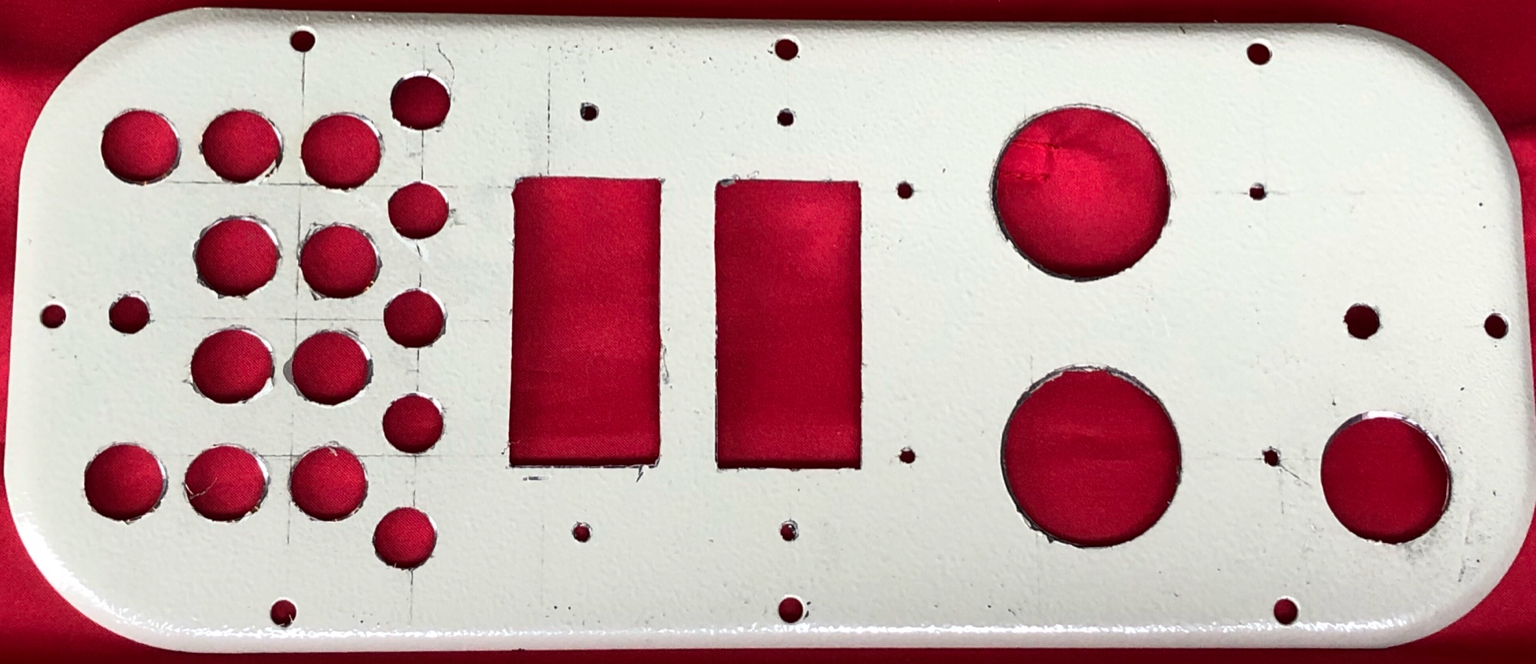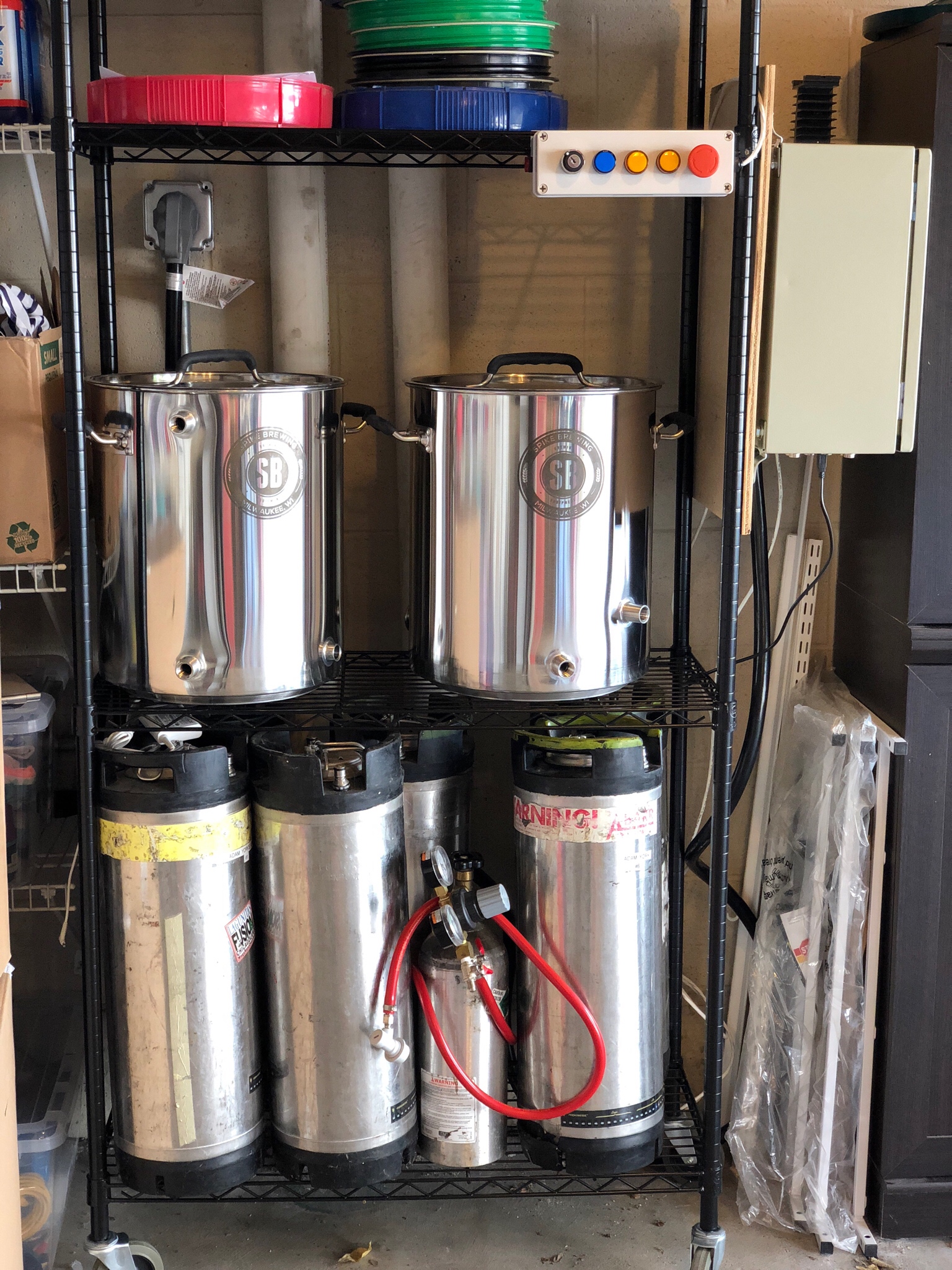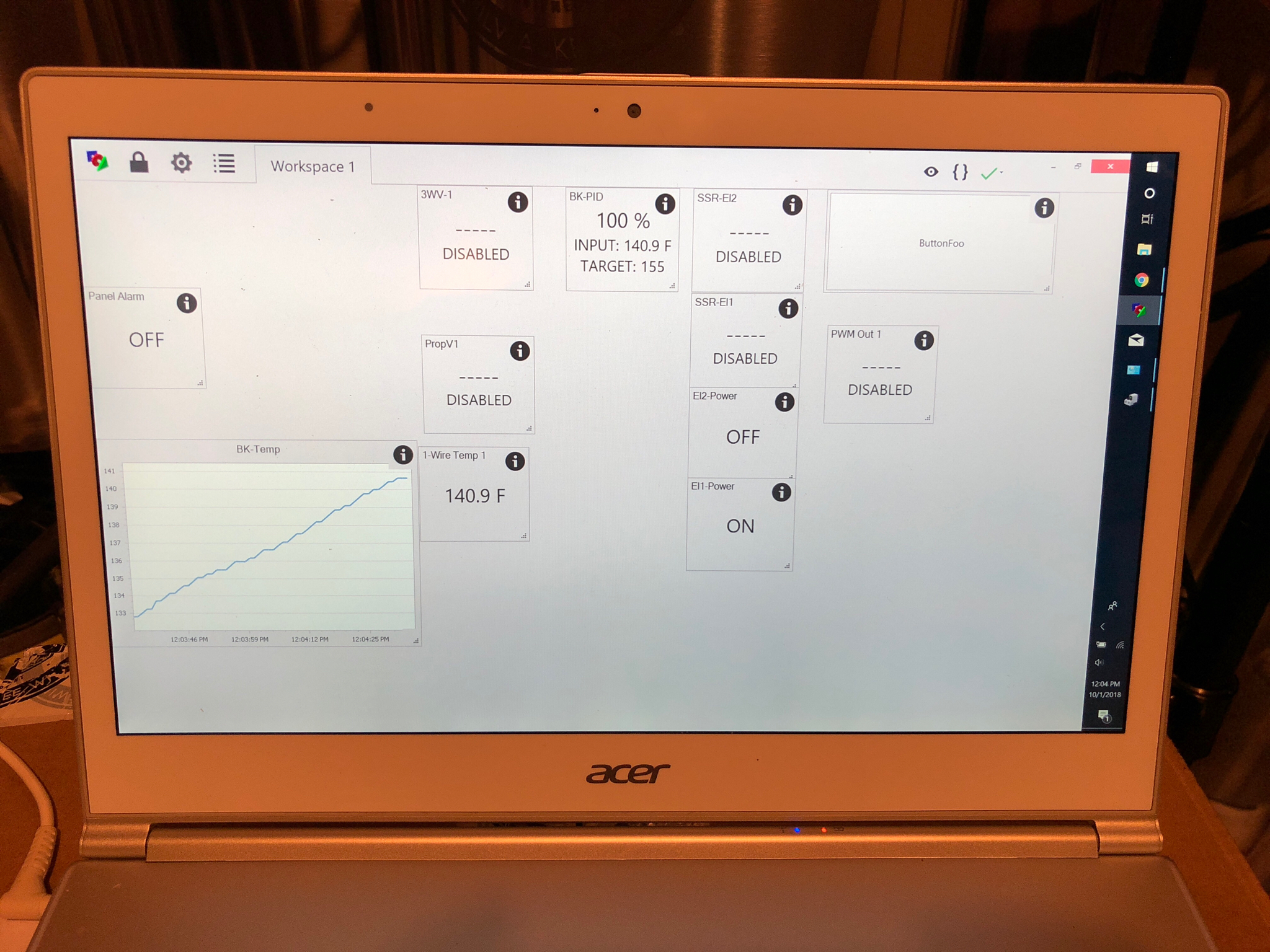Hi HBT!
I'm in the planning stages of re-entering homebrewing after taking several years off. The last time I brewed I used a direct fired kettle combined with a plastic cooler mashtun with a 120v RIMS tube for temperature control/stepping. Initially I planned a relatively simple eBIAB controller using the PID I already had, but once I read about @BrunDog's automated system and BruControl I was hooked. Although an automated BIAB system may seem a bit silly, I plan to use scripting and motorized valves to eliminate moving hoses--one of my least favorite aspects of my previous brew setup, along with losing prime on the pump and, of course, cleaning. I hope that not disconnecting hoses will reduce/eliminate losing prime, and that I can automate at least some of the drudgery of cleaning.
With that said, below are wiring/plumbing diagrams describing the system as planned so far. I've already posted my wiring over in the main BruControl thread, but I thought I'd start my own thread now that I've begun assembling parts. I did get lazy with diagraming the wiring for additional valves once I realized that I would potentially need so many. The valves/tubing in orange on the plumbing diagram are optional in case I want to underlet on-demand-heated strike water (should I decide to try some LODO methods). So those two three way valves would direct water from RIMS tube down to the kettle drain and in through the dip tube. Otherwise the three-way valves are hopefully self-explanatory: selecting between filtered water for strike/sparge and sending water to the chiller; selecting between fresh supply water and recirculating from the kettle; selecting between sending water/wort through the RIMS and into the chiller; and selecting between whirlpooling wort back to the kettle and sending chilled wort to the fermenter. I've begun ordering and have received most of the parts for the control panel, save for a few items that are making their way, ever so slowly from China. I need to decide on what kettle to get, after which I'll begin purchasing more of the parts for my plumbing.
Hopefully I'll continue to document this process, although I expect it to be very, very slow. Between the job and family I'll only have a few hours each week to devote to the project. Please let me know if you have any questions or comments on my planned build.
Thanks!


I'm in the planning stages of re-entering homebrewing after taking several years off. The last time I brewed I used a direct fired kettle combined with a plastic cooler mashtun with a 120v RIMS tube for temperature control/stepping. Initially I planned a relatively simple eBIAB controller using the PID I already had, but once I read about @BrunDog's automated system and BruControl I was hooked. Although an automated BIAB system may seem a bit silly, I plan to use scripting and motorized valves to eliminate moving hoses--one of my least favorite aspects of my previous brew setup, along with losing prime on the pump and, of course, cleaning. I hope that not disconnecting hoses will reduce/eliminate losing prime, and that I can automate at least some of the drudgery of cleaning.
With that said, below are wiring/plumbing diagrams describing the system as planned so far. I've already posted my wiring over in the main BruControl thread, but I thought I'd start my own thread now that I've begun assembling parts. I did get lazy with diagraming the wiring for additional valves once I realized that I would potentially need so many. The valves/tubing in orange on the plumbing diagram are optional in case I want to underlet on-demand-heated strike water (should I decide to try some LODO methods). So those two three way valves would direct water from RIMS tube down to the kettle drain and in through the dip tube. Otherwise the three-way valves are hopefully self-explanatory: selecting between filtered water for strike/sparge and sending water to the chiller; selecting between fresh supply water and recirculating from the kettle; selecting between sending water/wort through the RIMS and into the chiller; and selecting between whirlpooling wort back to the kettle and sending chilled wort to the fermenter. I've begun ordering and have received most of the parts for the control panel, save for a few items that are making their way, ever so slowly from China. I need to decide on what kettle to get, after which I'll begin purchasing more of the parts for my plumbing.
Hopefully I'll continue to document this process, although I expect it to be very, very slow. Between the job and family I'll only have a few hours each week to devote to the project. Please let me know if you have any questions or comments on my planned build.
Thanks!





